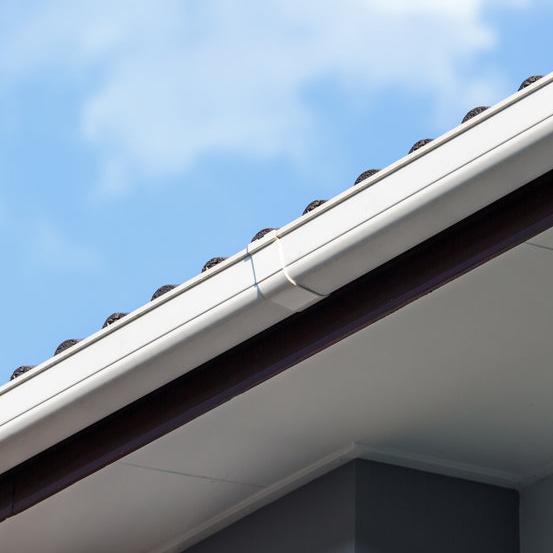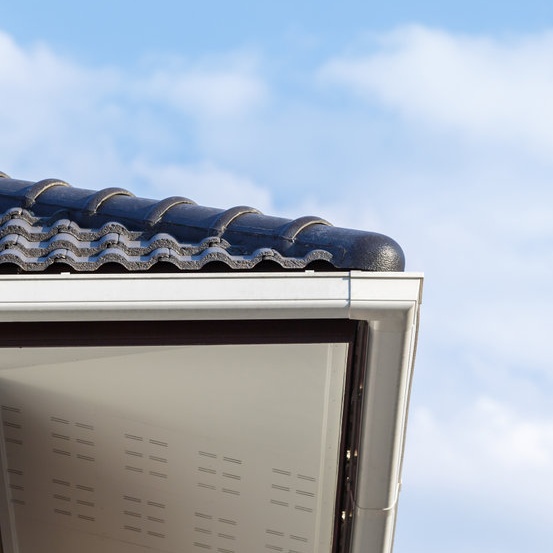
How do you install guttering?
Thanks to big box home improvement stores and YouTube videos, homeowners have learned how to do many things around their house. Many of those things were once done only by professionals, like gutter installation. With that DIY ability and way of thinking though, come many questions.
With those many questions though, we have to wonder is it worth doing it ourselves? Like with a gutter installation, there are many caveats in that process, it isn’t as simple as it may seem from the non-professional viewpoint. However, with an internet search, you can start your own gutter installation with this simple question, “Can you install gutters yourself?”.
While the answer is “Yes, you can do your own gutter installation.”, it is always followed up by this question, “How do I install guttering?”. It is that question and few others that we’ll answer here today, and you may find that having professional gutter installation and cleaning is the better way to go. So, read on as we proceed with those questions and answers:
Professionals will tell you that the best gutter installation is when nobody notices the gutters. Why? Because they blend in with the rest of the house, as if they had been there all along. So, with that in mind, here are the basic steps and suggestions to a gutter installation:
1. A plan.
Determine how many of the exterior walls need gutter installation? No, it may not be necessary for gutters all the way round your home. For example, if your house is on a typical city block with a house on each side within a few feet, you only need gutter installation in the back and front. However, a house with ample space all the way around, all 4 sides should have gutters installed.
With this in mind, you need to get precise linear feet measurement of gutter runs you’ll need. It is recommended to buy a few “learning curve” feet too. How many corners does your house have? You’ll need downspouts and elbow joints for those corners.
2. The budget.
Know what your budge is then look at the different materials gutters are available. Aluminum gutters are going to cost between $5 and $10 per linear foot, and vinyl gutter installation material will cost between $3 to $5 per linear foot. You can get really fancy with the finish, edges and trim, but that will cost. So, keep your budget in mind as you shop.
3. The Basics
For gutter installation, there are some essential tools, so make sure you have the following items:
- A ladder to reach the roof top
- Safety goggles and work gloves
- Cordless drill with minimum of two rechargeable batteries
- Fine tip permanent markers
- Tape measure, at least 25 foot long
- Wood screws
- Caulking gun, construction glue and gutter sealant
- Gutter brackets
- Tin Snips
4. The Fascia and Soffits
The fascia are the flat boards just underneath the roof positioned along the exterior walls. The soffits are under the roof positioned between the gutters and the exterior wall. You need to inspect both all the way around your home. If they have chipped, cracked, or peeling paint, any missing pieces or wood rot, these need to be repaired or replaced before you start your gutter installation.
5. Have Help
It is always good to have another person around that can help with holding the gutters while you drill, hand you things, and simply be there.
6. The Drainage
Your gutter installation will need a slight angle so water can drain toward the downspouts and flow into the yard. For a 40 foot gutter run, make the high point in the middle with a slight slope to each end. A shorter gutter run needs to angle one direction or the other with the lower end for the downspout.
7. The Measuring
This rule-of-thumb is measure twice and cut once. We recommend measure three times and cut once. Now you can follow the instructions that came with your gutter installation materials.
Which gutter system is the best?
A good gutter installation will maintain the integrity of your home, from the foundation up. So, the more educated and informed you can be about gutters, the better choices you’ll make. Starting with sectional or seamless gutters.
Most gutter installation materials come in sections only and are fastened together as you install them. However, today, aluminum gutters are available in the seamless style and are custom made for each home. What is the advantage of seamless or sections? Seamless won’t have the joints and seams to worry with leaks later on. The seamless style of gutter however are the more expensive.
With that decision made, now choose the type of material you want for your gutter installation:
- Vinyl Gutters: A favorite because of cost, price, and corrosion and rust resistant. Lightweight, snap together and great in mild climates. You’ll know you didn’t install them right when they start to sag in the middle of the sections. They do become brittle over time in extreme cold weather.
- Aluminum Gutters: Another cost efficient gutter installation material. Lightweight rust resistant, and easy to install. Good for cold climates and won’t need painting as often as the vinyl gutters. Structurally, they aren’t as strong as other materials, easily dented.
- Copper and Steel Gutters: Compared to aluminum gutters, these are more sturdy, and the galvanized steel is cost effective. However, they do rust and will need patching or replacing sooner than other gutter installation materials. The stainless steel gutters are virtually indestructible and rust resistant. Copper gutters are the beauty of all gutters in looks, indestructible, and rust resistant. However, both are expensive.
- Wood Gutters: Used for years but not a common gutter installation material today. If you’re restoring a historic home and looking for authentic, these are the better choice, but you’ll pay a hefty price.
Are wider gutters better?
Yes, a wider rain gutter will have more capacity to handle the rain flowing through, and less clogging from debris like leaves and twigs. With less clogging, your gutter installation will provide better protection for your home against water damage.
How far should gutters extend past the house?
The gutter runs themselves will be installed against the fascia by brackets. The downspouts should extend at least four feet out, six feet if possible. Depending on the slope of your house, the soil around your house, and building codes, away from the house; however, they may need to extend much further depending on your soil, the slope of your house and local buildings codes.
How long can a gutter be with one downspout?
Experts and professionals recommend one downspout to every 35 feet of gutter run.
How long does gutter installation take?
For a first time DIY job, on an average size home, expect the project to take a full day, maybe the whole weekend. For a professional gutter installation, an average sized single story home can take up to 4 hours. A larger home, more than 3,000 square feet, can take up to 8 hours.

When You Decide This Isn’t For You
After reading our piece and doing your own additional research, you may have second and third thoughts about a DIY gutter installation. So, get on the internet and do a search for ‘who installs gutters near me?’ and get two to three quotes. Ask for recent references and check those references. Call 770-735-4433 today for your seamless gutter installation in Canton, GA.

